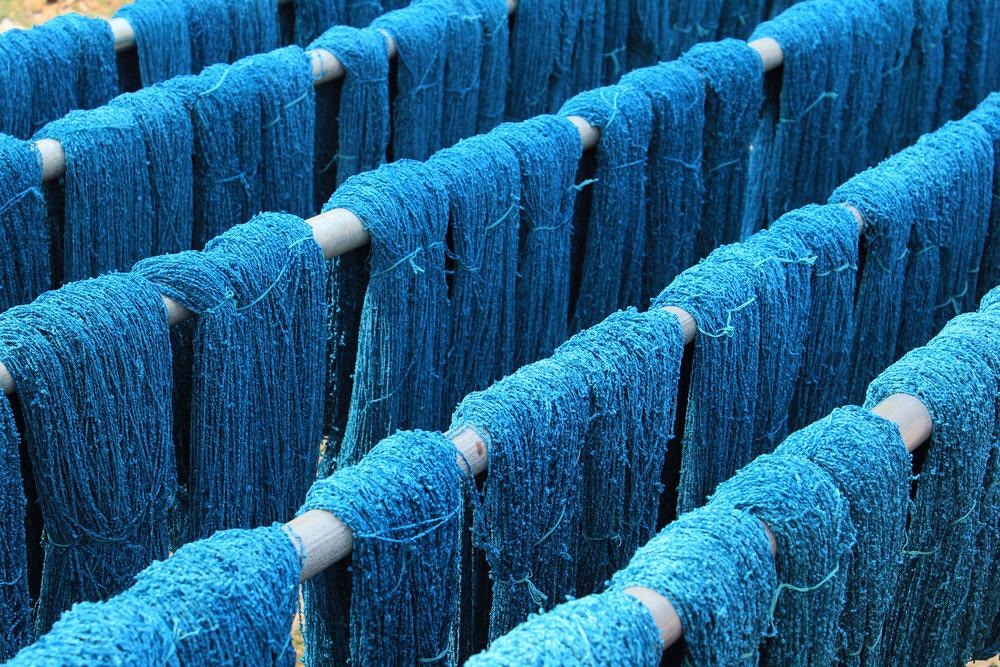The fashion industry does more damage to the environment than almost any other sector. It is in the ranks of heavy industries such as oil and mining, and widespread activities such as agriculture and construction. A French textiles firm, PILI, is using microorganisms to sustainably create colorful dyes and help fix the fashion industry’s problems.

Image Credit: naKornCreate/Shutterstock.com
Biosynthesis
PILI uses biosynthesis techniques to create dyes from sugar using fermentation processes. These techniques remove solvents and high temperatures required by conventional dyeing techniques.
The method involves introducing microorganisms to ferment sugars, resulting in a colorful pigment. The pigment is filtered out so that the microorganisms can be used again later. Pigments are finally purified to enable PILI’s clients to use them in a range of industrial applications.
This process is both environmentally friendly and scalable. The bacteria that turns sugar into colors can be used at industrial scales but does not cost the earth.
Bacterial cellulose used in this technique is attracting significant interest from the textile sector. It is produced without high energy costs, is biodegradable, and does not pollute the environment.
PILI re-engineers microbial enzymes to produce brilliant and effective dyes. Enzymes are the proteins found in every living cell that catalyze chemical reactions needed to sustain life.
PILI synthesizes them, setting the microorganisms to work without large energy inputs or toxic reagents required.
This is a novel dye technology, using enzymatic cascades to turn renewable carbon feedstocks such as sugar into textile dyes.
Environmental Problems with Textiles
This process will help the second-most polluting industry in the world – textiles – to improve its environmental reputation. Only petroleum pollutes more than fashion.
Producing, manufacturing and dyeing fabric all have high environmental costs. These costs are rising steadily as the industry grows. This growth is in part due to a rising world population, but also to changes in consumer habits often labeled as “fast fashion.”
One pair of jeans requires approximately 15,000 liters of water to grow enough cotton. Fashion materials use around 79 billion m3 of freshwater each year. This usually takes place in places such as South Asia, where water is already scarce.
Chemical treatments used in dyeing and preparation both pollute the areas around factories. At least 8,000 synthesized industrial chemicals are needed to turn raw materials into textiles, and a quarter of the pesticides used worldwide are used to grow cotton.
Burning or sending large amounts of unsold clothing to landfill also poses environmental risks. Approximately 80% of clothing that is sold will also go to landfill sites. The UK alone sends around 350,000 tons of clothes to landfills each year. On average, each American citizen throws nearly 70 lb of clothing to the trash each year.
Some brands – seeking acceptance from environmentally conscious consumers – use more plant materials for fibers as well as dyes. However, these responses are not scalable. Plant-based indigo, for example, would have to grow in a field the size of Texas.
Fashion’s Response to the Climate Crisis
Recognizing these problems, some actors in the fashion industry have started to respond to the climate crisis – and their responsibility for it – in meaningful ways.
Biotechnology solutions such as PILI’s are among the most promising. For example, new spider silk textiles made from microorganisms can replace silk.
The biofabrication processes that spidersilk and plastic- and animal-free leather employ are similar to those used by PILI to create its microorganism dyes for textiles.
PILI: Stitching the History of Dyeing to its Future
PILI is taking a holistic approach to fashion industry problems. The company brings biologists, chemists, business managers, and designers together to co-produce solutions that work.
The company is based in Toulouse, where it has a historic connection with the textile and dyeing industries. Toulouse made its fortunes from the woad trade until the middle of the 16th century.
The company also operates in CNAM in Paris (the national conservatory), where its green chemists work. CNAM just created the first-ever chair of dyes chemistry, and synthetic dyeing began there in the middle of the 19th century.
The company is currently focused on applications for its microorganism technology for the textile industry. It aims to revolutionize the industry by removing its reliance on synthetic dyes, and the huge quantity of water pollution caused by conventional dyeing processes.
Products are compatible with the current dyeing infrastructure used by the industry, and PILI is focused on developing its product line and refining its processes.
References and Further Reading
da Silva, C.J.S. et al. (2021). Bacterial cellulose biotextiles for the future of sustainable fashion: a review. Environmental Chemistry Letters. https://doi.org/10.1007/s10311-021-01214-x
The fashion industry is the second largest polluter in the world. [Online] SustainYourStyle.org. Available at: https://www.sustainyourstyle.org/old-environmental-impacts.
Disclaimer: The views expressed here are those of the author expressed in their private capacity and do not necessarily represent the views of AZoM.com Limited T/A AZoNetwork the owner and operator of this website. This disclaimer forms part of the Terms and conditions of use of this website.